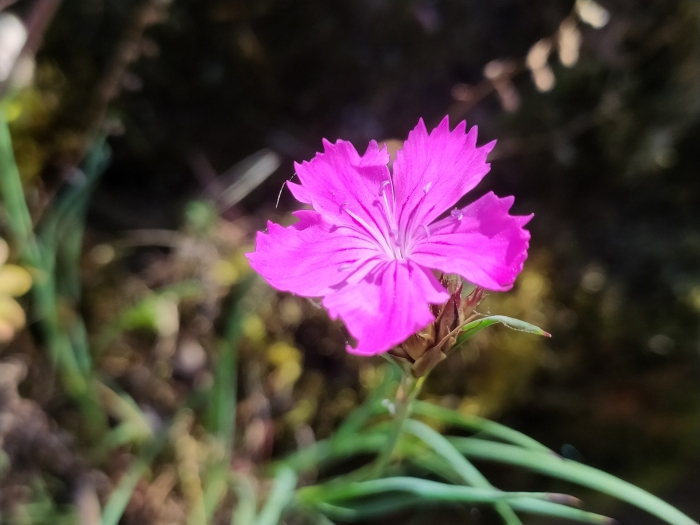Carthusian Pink
(Dianthus carthusianorum)
Carthusian Pink (Dianthus carthusianorum)
/
/

arthur_haendler
CC BY 4.0
Image By:
arthur_haendler
Recorded By:
Copyright:
CC BY 4.0
Copyright Notice:
Photo by: arthur_haendler | License Type: CC BY 4.0 | License URL: http://creativecommons.org/licenses/by/4.0/ | Rights Holder: arthur_haendler | Publisher: iNaturalist | Date Created: 2023-05-29T15:02:37-07:00 |

























Estimated Native Range
Summary
Dianthus carthusianorum, commonly known as Carthusian pink, is a herbaceous perennial native to various habitats across Europe, including dry, grassy places, open woodlands, and alpine meadows, from Spain to Poland and Ukraine, and can be found at elevations up to 8202 feet. It typically reaches up to 24 inches in height and has slender, grass-like leaves. From early to late summer, it produces a profusion of dark pink to purple flowers, each held atop a tall, wiry stem, which are highly attractive to pollinators and add vibrant color to gardens.
Carthusian pink is valued for its ease of maintenance and its ability to thrive in poor soils, making it an excellent choice for rock gardens and border fronts. It is also used in cottage gardens and naturalistic plantings. This plant prefers well-drained soil, tolerates drought once established, and requires full sun to flourish. While generally disease-resistant, it can suffer from root rot in overly moist conditions.CC BY-SA 4.0
Carthusian pink is valued for its ease of maintenance and its ability to thrive in poor soils, making it an excellent choice for rock gardens and border fronts. It is also used in cottage gardens and naturalistic plantings. This plant prefers well-drained soil, tolerates drought once established, and requires full sun to flourish. While generally disease-resistant, it can suffer from root rot in overly moist conditions.CC BY-SA 4.0
Plant Description
- Plant Type: Herb
- Height: 2-3 feet
- Width: 1-2 feet
- Growth Rate: Moderate
- Flower Color: Pink, Red, White
- Flowering Season: Spring, Summer, Fall
- Leaf Retention: Evergreen
Growth Requirements
- Sun: Full Sun, Part Shade
- Water: Low, Medium
- Drainage: Fast, Medium
Common Uses
Border Plant, Butterfly Garden, Deer Resistant, Groundcover, Low Maintenance, Potted Plant, Rock Garden, Street Planting
Natural Habitat
Native to dry, grassy places, open woodlands, and alpine meadows across Europe
Other Names
Common Names: Clusterhead, Chartreuse Carnation, Charterhouse Pink, Cluster-Head Pink
Scientific Names: , Dianthus carthusianorum, Dianthus carthusianorum subsp. alpestris, Dianthus carthusianorum var. bukovinensis, Dianthus serpentini, Dianthus velebiticus, Diosanthos carthusianicum,
GBIF Accepted Name: